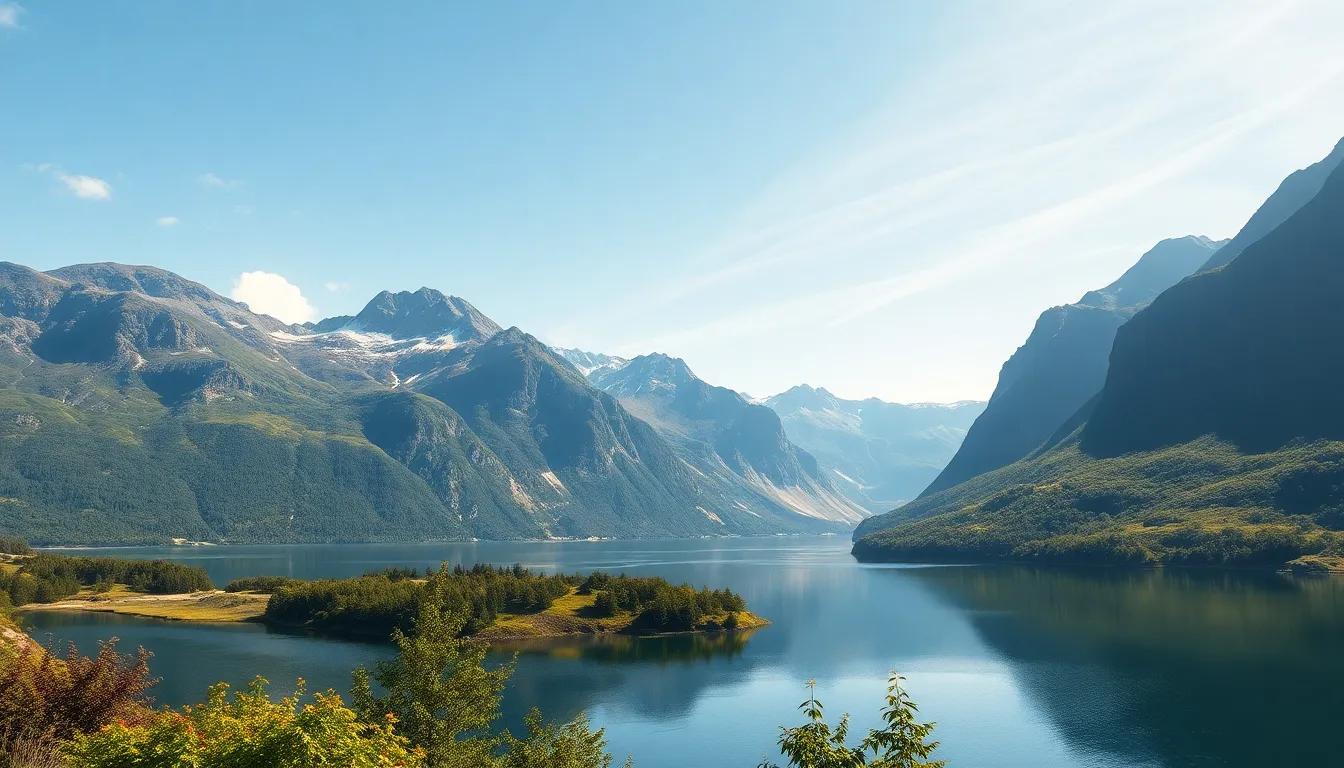Picture this: snow-capped mountains, stunning fjords, and a society where everyone seems to be perpetually happy. Welcome to Scandinavia, a region that’s more than just a pretty postcard. It’s a blend of breathtaking landscapes, rich history, and cultures that have mastered the art of hygge—because who doesn’t want to cozy up with a hot drink while the snowflakes fall?
Table of Contents
ToggleOverview Of Scandinavian Countries
Scandinavia consists of three main countries: Sweden, Norway, and Denmark. Each nation boasts its distinct cultural heritage and historical landmarks. Sweden, known for its rich history in innovation, offers an array of beautiful cities like Stockholm and Gothenburg. Nature enthusiasts often flock to Norway for its breathtaking fjords and mountainous terrains.
Denmark, recognized for its vibrant lifestyle and design, features the charming city of Copenhagen, which embodies a blend of modern architecture and historical sites. The geographical proximity of these nations fosters unique regional ties and collaborations. Despite their similarities, each country showcases its individual traditions, languages, and customs, providing a diverse cultural tapestry.
The climate in Scandinavian countries varies, characterized by cold winters and mild summers. Such conditions shape the way of life, influencing outdoor activities and local cuisine. Nordic cuisine highlights fresh ingredients, focusing on seasonality and sustainability.
Economically, Scandinavia ranks high on global scales, marked by strong welfare systems and robust industries. Countries in this region frequently emphasize renewable energy sources, showcasing commitment to environmental sustainability. Education systems in Scandinavia are often seen as exemplary, favoring equality and accessibility.
Overall, Scandinavian countries illustrate a unique integration of natural beauty, cultural richness, and progressive values. These nations stand as models of social equity and environmental awareness, attracting visitors and students alike.
Key Characteristics Of Scandinavian Countries

Scandinavian countries feature distinct geography and vibrant cultures that shape their identities.
Geography and Climate
Norway boasts dramatic fjords and rugged mountains, while Sweden offers expansive forests and numerous lakes. Denmark, on the other hand, consists of flat landscapes along the coastline. Each country experiences a varying climate, with Norway and Sweden facing colder winters and milder summers, whereas Denmark enjoys a temperate climate year-round. These geographical features not only attract outdoor enthusiasts but also influence regional activities and local lifestyles. Incredible natural beauty and diverse ecosystems characterize the area, promoting sustainable practices that residents embrace.
Culture and Traditions
Rich cultural heritages define Scandinavian nations. Sweden is known for its innovation in design and technology, which reflects in its architecture and products. Norway prioritizes its longstanding maritime traditions, celebrating festivals that showcase its Viking history. Denmark emphasizes hygge, a concept that fosters coziness and community, evident in its cuisine and social gatherings. Each nation honors traditional music, dance, and folklore, enhancing its cultural tapestry. Local cuisine, rooted in fresh ingredients, often focuses on sustainability and seasonal availability, showcasing their commitment to environmental responsibility.
Countries Included In Scandinavia
Scandinavia consists of three primary countries: Sweden, Norway, and Denmark. Each nation boasts distinct characteristics, contributing to the region’s cultural diversity.
Sweden
Sweden ranks as the largest Scandinavian country by land area. Known for innovation and design, Sweden’s capital, Stockholm, features stunning architecture and vibrant arts districts. Outdoor activities abound, with expansive forests and numerous lakes providing ample opportunities for exploration. The country emphasizes sustainability in its policies and practices, particularly in urban planning and renewable energy initiatives. Festivals celebrating Swedish traditions and modern cultural events also play a vital role in building community and national identity.
Norway
Norway is renowned for its dramatic landscapes, which include breathtaking fjords and towering mountains. The country fosters a strong connection to nature, encouraging activities like hiking and skiing, attracting outdoors enthusiasts year-round. Oslo, the capital, combines modern architecture with rich history, offering numerous cultural experiences. Norwegian heritage is deeply rooted in maritime traditions, with coastal communities showcasing their fishing legacy. Efforts towards environmental conservation and sustainability further highlight Norway’s commitment to preserving its natural beauty.
Denmark
Denmark is recognized for its unique blend of modernity and history, exemplified by Copenhagen’s charming canals and stunning castles. Thriving design and architecture sectors reflect its innovative spirit, drawing international attention. The Danish concept of hygge emphasizes comfort and togetherness, influencing local cuisine and social gatherings. Flat terrains and a temperate climate support outdoor living and recreational activities throughout the year. Denmark also prioritizes environmental sustainability, leading global initiatives to reduce carbon emissions and promote renewable energy sources.
Differences Between Scandinavia and Nordic Countries
Scandinavia refers specifically to three countries: Sweden, Norway, and Denmark. This grouping emphasizes cultural and historical ties among these nations. On the other hand, the term Nordic includes Finland and Iceland along with the Scandinavian countries. Nordic countries share geographical proximity and similar social systems, promoting welfare and environmental sustainability.
Culturally, Scandinavian countries highlight unique traditions and lifestyles. Sweden boasts a rich history of innovation while Norway emphasizes its maritime heritage. Denmark shines through its focus on design and architecture. Each country embraces its own distinct languages, which belong to the North Germanic language family.
In terms of geography, Scandinavia showcases mountainous terrains and deep fjords, especially in Norway. This contrasts with the flatter landscapes of Denmark and Finland’s expansive forests. Culturally, these geographical distinctions impact lifestyle and local customs.
Economically, Scandinavian nations are known for their robust welfare states, often leading in global rankings of happiness and quality of life. Nordic countries also share advanced social policies, yet Finland and Iceland introduce additional unique elements like differing education systems and languages.
Environmental practices also illustrate differences. Scandinavia focuses heavily on renewable energy initiatives, with Sweden taking the lead in innovation. In contrast, Nordic countries collectively emphasize sustainability but apply it in various contexts, such as Iceland’s geothermal energy.
Understanding these nuances clarifies the relationship between Scandinavian and Nordic nations. Each group offers contrasting elements while demonstrating shared values, making both culturally significant in their individual ways.
Scandinavian countries embody a unique blend of natural beauty and cultural richness. Each nation offers distinct experiences shaped by its geography and history. Sweden’s innovation, Norway’s dramatic landscapes, and Denmark’s design focus create a vibrant tapestry that attracts visitors from around the globe.
The emphasis on sustainability and social equity further enhances their appeal. With strong welfare systems and high quality of life, these countries serve as models for progressive values. Understanding the intricacies of Scandinavia not only highlights its beauty but also showcases the shared cultural ties that bind these nations together. Whether exploring the fjords of Norway or enjoying the cozy atmosphere of Copenhagen, the essence of Scandinavia resonates deeply with those who venture into this enchanting region.


